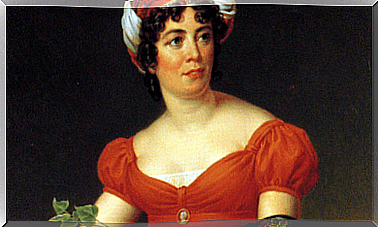Personality: What Is It Really?

We are unique and unrepeatable beings and our psychology is as individual and idiosyncratic as our personality. All the experiences we live have a hold on it, even if some mark us more than others. Nowadays we know that personality has both genetic and hereditary and environmental components.
But what is personality really? Does it only concern our actions or does it also concern our inner world (thoughts, memories, etc)? It certainly has to do with all this and much more.
Personality psychology, which studied this concept, took charge of his analysis. How? We’re about to find out.

What is personality?
This concept has been defined in many ways. It is a hypothetical construct that we deduce from a person’s temperament and that involves a series of characteristic traits of the same.
In addition to this, it also involves the way we think or perceive and shapes itself over the course of life thanks to our experiences, especially those of childhood and adolescence.
One of the most complete definitions for this concept is the one proposed by Bermúdez (1996) who describes it as follows: “personality is a relatively stable organization of structural and functional characteristics, innate and acquired on the basis of certain conditions, during the development, and which constitute the set of peculiar and definitive traits of the attitude with which each individual faces different situations “.
What is the use of personality? In addition to defining ourselves as the unique people we are and helping us build our identity, personality allows us to successfully adapt to context. That is, it possesses specific adaptive characteristics.
The psychology of personality
Personality psychology is the discipline that deals with studying the effect of individual differences on behavior. Specifically, it is a branch of psychology that aims to study this concept and how it varies between people (individual differences).
One of the main authors in this area is Gordon Allport (1897-1967), American psychologist and author of The Personality (1936). Allport is practically considered one of the founders of this branch of psychology and has placed particular emphasis on the character of each individual and on the importance of the current context (as opposed to past history).
What elements does the concept of personality provide?
The concept of personality foresees two large behavioral groups or related to the characteristics of the individual. These conducts are:
- Manifest behavior (what actions a person takes or what attitudes a person takes).
- Private experience (i.e., desires, memories, thoughts, needs, opinions).
Therefore, personality is a distinctive trait of each of us. It makes us unique and unrepeatable. Yet, it is also true that there are specific patterns, or tendencies to be in a certain way; these include the so-called personality disorders.
This means that even if a person is a certain way, some patterns can be common to many people. We refer to the so-called traits, extensively studied by personality psychology.
How can we study them?
There are three great models used to study this concept. Each of them focuses on the study of behavior in order to come up with a hypothesis, this is because behavior tells us a lot about a person. There are three models:
- Internistic, for which behavior is determined by personal variables.
- Situationists: the causes of the conduct are external to the individual. The emphasis is on the conduct itself.
- Interactionists: Behavior is the result of the interaction between personal variables and context variables.
Personality traits and the Big Five Model
Traits are that set of characteristics common to certain personalities. Examples of traits are: optimism, cheerfulness, sincerity, transparency, pessimism, introversion.
One of the main models in this area is the so-called Big Five Model developed by Raymond Cattell, who believes there are 5 factors, each of which defines a particular personality:
- Extroversion (as opposed to introversion).
- Neuroticism (as opposed to emotional stability).
- Conscientiousness or responsibility (as opposed to irresponsibility).
- Openness (as opposed to closure).
- Friendship (as opposed to insensitivity).
These 5 factors (and their respective opposites) have received different denominations, all with the same meaning. According to this model, through these 5 factors (and their respective traits) we can define anyone’s personality.
Personality Disorders
Even if the personality is unique, some patterns can repeat themselves by shaping different types. When the latter include extreme, dysfunctional, maladaptive or normatively deviant traits, we speak of personality disorders (PD).
In addition, in order to diagnose PD, the person must be unwell or show counterproductive behavior. The different DPs have been collected in the Diagnostic and Statistical Manual of Mental Disorders (DSM-5) and in the International Classification of Diseases (CIE-19). Depending on the characteristics, the DPs can be divided into three large groups (or clusters: A, B and C).
- A: Paranoid DP, Schizoid DP and Schizotypical DP.
- B: Antisocial DP, Limit DP, Histrionic DP, and Narcissistic DP.
- C: Avoidant DP, Dependent DP, and Obsessive Compulsive DP.

Concluding remarks
Personality takes shape little by little, especially during childhood. At some point in our life it stabilizes (and remains unchanged forever). According to the psychologist Luis Muiño, we can change small aspects of our way of being, but the personality cannot be turned upside down.
It has a genetic basis, but takes shape through learning, context, relationships and lived situations; it is made up of everything we are inside, but also how we behave outside.









